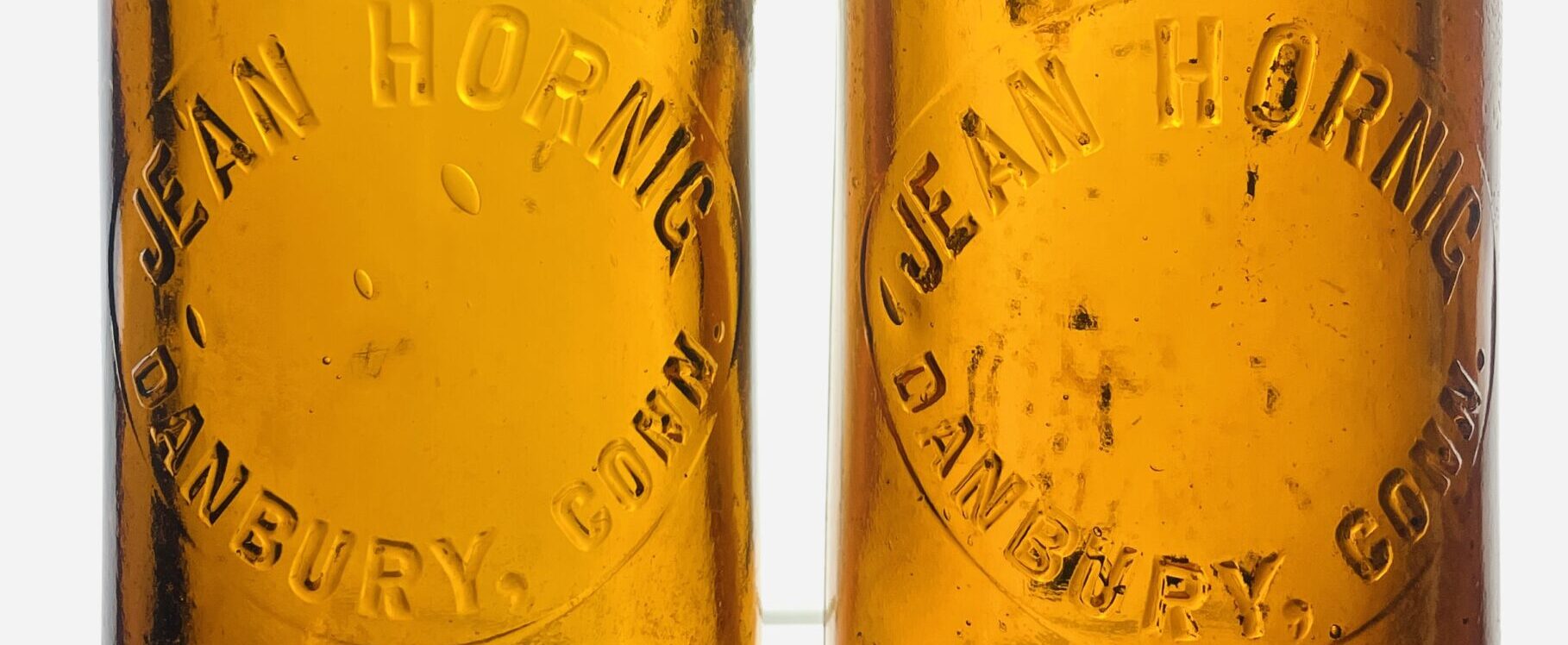
NEW YORK BOTTLES- FREE FALL, THE DEATH OF J. M. ERTS
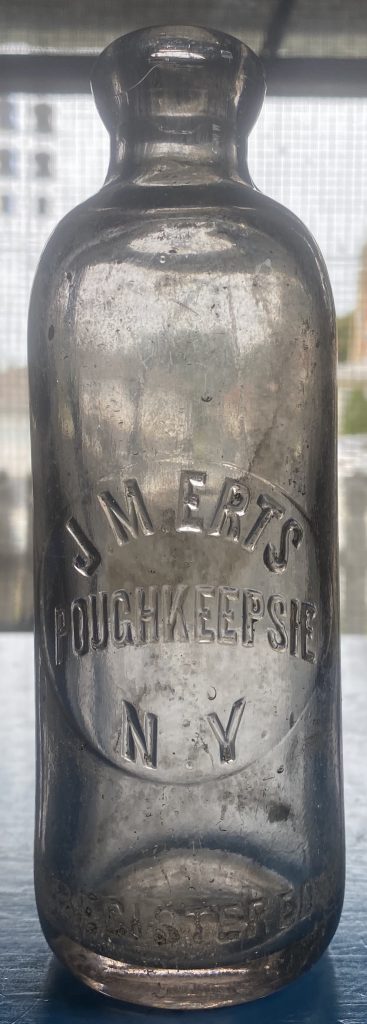
![]() FREE FALL: THE DEATH OF J. M. ERTS
FREE FALL: THE DEATH OF J. M. ERTS
When Joseph Erts died unexpectedly in 1916, he left behind a business he started with his brother thirty years earlier. The record of Erts’ death is reasonably straight forward but the story of his life is mostly incomplete. However, details that have surfaced come from old newspaper accounts. Hatcitydiggers.com has pieced together this much:
Joseph Erts was born in Denning, Sullivan County New York about 1854 and newspaper accounts suggest he started his soda business with his brother, George, sometime in the mid-1800s. The name of the firm initially appears to have been “Erts Brothers.” However, after George’s death newspaper ads tell us the firm went by J. M. Erts. Accounts tell us Erts ran his business from 269 Main St in Poughkeepsie, N.Y. for at least 30 years. Erts sold the following: sold soda, mineral water and beer (for family use.) Some of the popular sodas the firm produced were birch beer, ginger ale, cream, lemon and sarsaparilla. Beyond Erts bottling career, we learned he worked as a fireman and was an inventor who held at least two patents. Joseph was also married and had four children. Nothing is known about Erts career as a fireman but hatcitydiggers.com has learned Joseph belonged to the firemen’s association in Poughkeepsie. Ultimately it is at the Veterans’ Firemen’s Association house on liberty street in Poughkeepsie that Erts had his accident. According to the Poughkeepsie Evening Enterprise Joseph went to the basement. While walking downstairs, he slipped on melting snow and fell. The fall broke Joseph’s hip and fractured his skull. According to the Poughkeepsie Evening Enterprise he, “never fully regained consciousness,” after “an illness of four weeks.” And died from his injuries. He was 62. Finally, during his life, Joseph belonged to several fraternal organizations such as the fore mentioned Veterans’ Firemen’s Association but there were at least two more groups Joseph belonged to. Hatcitydiggers.com has learned Joseph belonged to a group that today would seem rather inappropriate for a Caucasian by today’s standards. Joseph belonged to the Improved Order of Red Men a group for white males only. The members would costume themselves during their fraternal events in Native American regalia, war bonnets, feathers etc. Lastly, the Erts bottle above is a Hutchison soda type from about 1900. It’s one of several we found while digging in New York state.
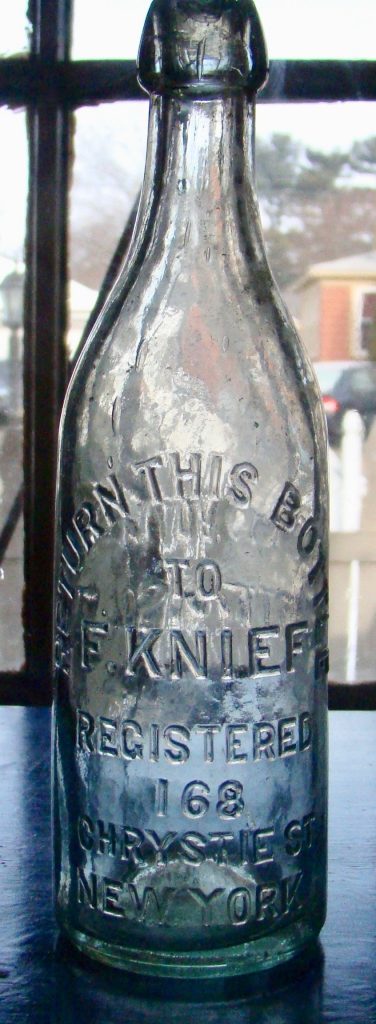
![]() FROM THE BELLY OF THE BEAST: FRANK KNIEF BEER
FROM THE BELLY OF THE BEAST: FRANK KNIEF BEER
Even with a name like Knief, we can’t attest to Frank Knief’s character but if the location of his saloon is any indication of Frank’s nature, he must have been a rough and tumble sort of guy. According to Trow’s New York City Directory Frank Knief started bottling beer on Chrystie St in the heart of Manhattan’s Bowery about 1889. By the 1890s, The Bowery, a densely populated slum in New York City was home to prostitution, dance halls, flophouses and saloons that catered to the city’s homosexuals. Frank Knief moved his business at least two times during the 1890s, first to 14 Rivington St, not far from the city’s Little Italy distract, then to 140 East 12th St. Knief may have relocated because of the Bowery’s”bawdy” environment but likely cheap rents were the real incentive. About the time of the moves, Trow’s lists Knief as a “water” dealer. With such a vague description there’s isn’t any way of telling whether Knief was bottling soda or mineral water. The last entry for Knief in the directories is 1905. We dug this heavily whittled bottle (above) from a dump in New Milford, Ct- a far cry from New York’s skid row.

![]() HEINCHON DAIRY: HUMBLE BEGINNING, PAWLING LANDMARK
HEINCHON DAIRY: HUMBLE BEGINNING, PAWLING LANDMARK
In the beginning, Danial Heinchon’s dairy operation was so small he made deliveries by foot and the milk was kept cool in a stream on the property. Eventually, Heinchon’s Dairy became one of the biggest enterprises in Pawling with deliveries being made as far as New York City. According to the Poughkeepsie Journal, at its height, the dairy had over 100 cows. Danial, a native of Pawling, was born in 1896. He served in the military and was a WWI veteran. A few years after the Great War Danial established his firm. For years the dairy was a landmark on Rt 22 in Pawling and business was brisk. In 1965 the dairy had a setback when the Heinchon’s large dairy barn was set on fire. the animals were rescued but the barn was a total loss. Luckily the arsonist was caught. A few miles away the Heinchon’s built a new barn. But the fire that could have ended in disaster was not far from their minds. “[But] from the ashes of that day,” according to Connie Johnson Hambley, writing for Pawling Public Radio, “rose an inner resilience and strength to carry on.” Setbacks weren’t going to bring the family down the Heinchons had roots in Pawling and at their core was the family dairy business but they had another foundation- ice cream. The Heinchon’s ice cream was some of the most popular drawing people from near and far since 1923. According to Alice Gabriel of the New York Times “Big sellers are Hudson Harvest (vanilla ice cream churned with local raspberries, whole almonds and chocolate chips), Mud pie (coffee ice cream with fudge ripple and Oreo cookies) and smooth black raspberry.” Sadly in 2016 the ice cream parlor, a yellow one-story house on Rt 22, closed and has not reopened. The Heinchon name has also been removed from the building. In 1978 Danial Heinchon died and a close relative Kent Johnson took over the operation. In time the Heinchon’s diversified and the company appears to be no longer in the milk business. The bottle (above), a Heinchon’s Dairy from the 1930s, is one of two discovered during a dig in Pawling two years ago.
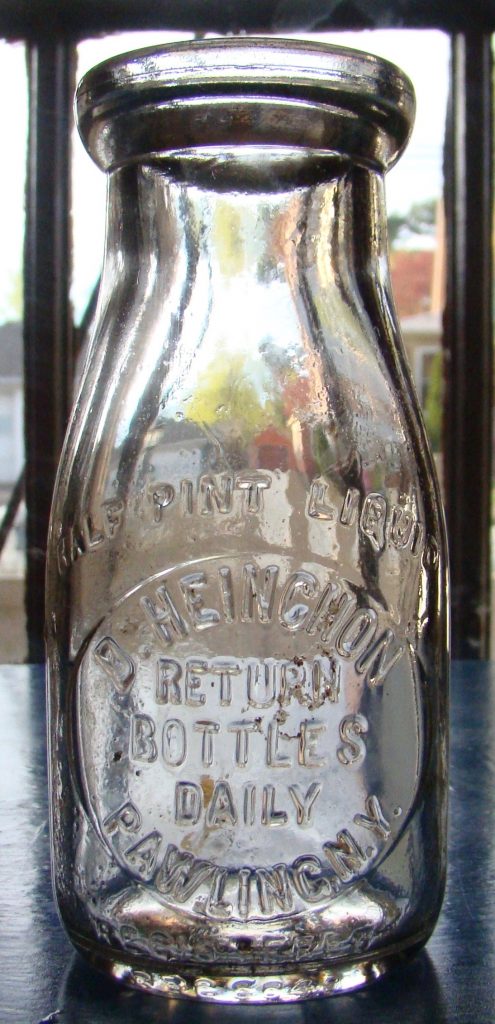
The friendly reminder to, “return bottles daily” didn’t keep the user of this Heinchon bottle, ca 1930s, from tossing it down an embankment years ago.
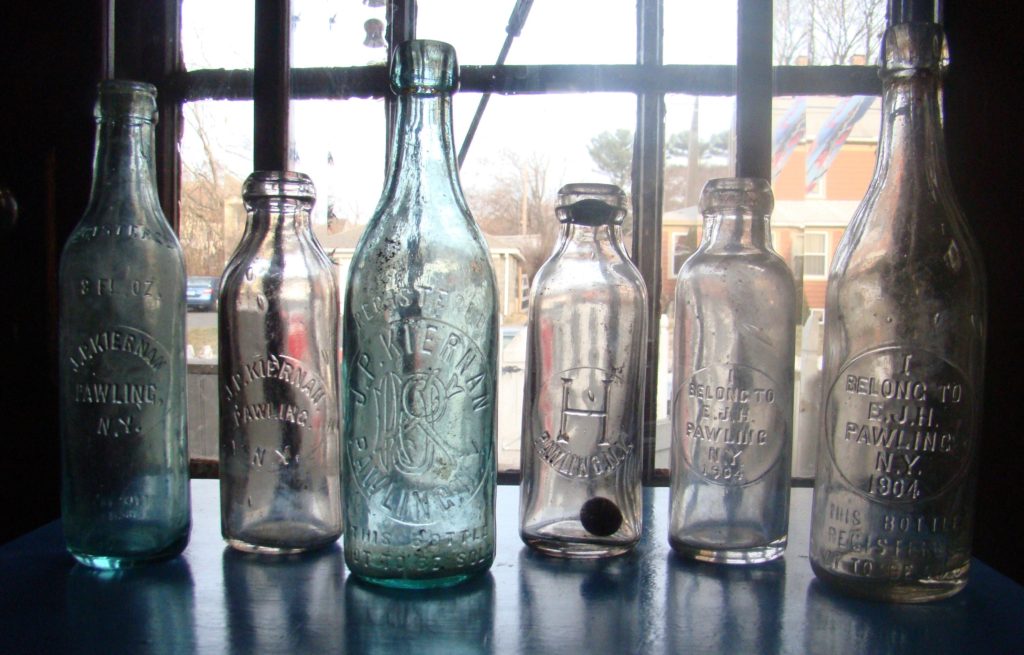
![]() “THIS BOTTLE NOT TO BE SOLD” THE E. J. HAWKINS’ CAPER
“THIS BOTTLE NOT TO BE SOLD” THE E. J. HAWKINS’ CAPER
After his arrest for stealing competitor’s bottles, Pawling bottler E. J. Hawkins, made sure everyone knew who his bottles belonged to- so they wouldn’t try the same tactic on him. One of Hawkins’ victims, J. P. Kiernan, had moved to Pawling just three years earlier. Unfortunately, little is know about Joseph P. Keirnan. Joseph was born in 1867. Besides bottling, Kiernan may have raised cattle. Eventually, he would become Pawling’s postmaster in 1918 only to died four days after his appointment. In contrast, we know much more about his rival, E. J. Hawkins. Edward J. Hawkins was born in Brooklyn, N. Y. in 1868 three years after the Civil War. He came to Pawling as a youngster. As an adult, Hawkins married Rose Murty and they had three children William, Edwin and Myrtle. Edward did his best to make ends meet. Not only did he run a bottling firm but he also “conducted” a coal business in town. He was also a manager at one point of the American House Hotel in Patterson, N. Y. To date Keirnan and Hawkins are the only bottlers known in Pawling and competition must have been fierce. So much so that it landed Hawkins in jail for violating the “Bottling Act.” * In 1903 Keirnan was losing “a great many of his bottles” an investigation ensued and the police traced the bottles to Hawkins. The cops “searched” Hawkins’ premises and found Keirnan bottles along with bottles from other firms. There were about 300 in total (132 were Keirnan bottles). We learned this from the American Bottler journal. From the Bottler: “Hawkins was arrested and brought before Justice Pearce, who informed the prisoner of his rights. Hawkins pleaded guilty…” Pearce fined Hawkins 50¢ each for the 132 Keirnan bottles. The cost came to $66. We believe Hawkins continue bottling after the escapade. E. J. Hawkins died in 1940 he was 71 years old. Sadly E. J.’s children all died before they reached middle age. E.J.’s sons, William and Edwin both died just four years after their father ( Edwin, a police officer killed himself with a bullet to the head. ) Edward’s daughter, Myrtle past in 1936. The bottles to the right are E. J. Hawkins. Ironically Hawkins went out of his way to remind everybody in the area who the bottles belonged to and Hawkins did not mince words. The message embossed on the Hawkins bottles is quite clear: “I belong to E. J. H.” J. P. Kiernan bottled both beer and soda. The Kiernan beer (middle) is a striking example with its beautiful embossed initials.
∗In the 19th and early 20th-century, the purchaser of a beer/soda bottler’s product owned the contains in the bottle, not the bottle its self hence the common phrase found of old beer and soda bottles: “This bottle not to be sold.” If a person did not return the bottle, they could, as in the case of E. J. Hawkins, be prosecuted.
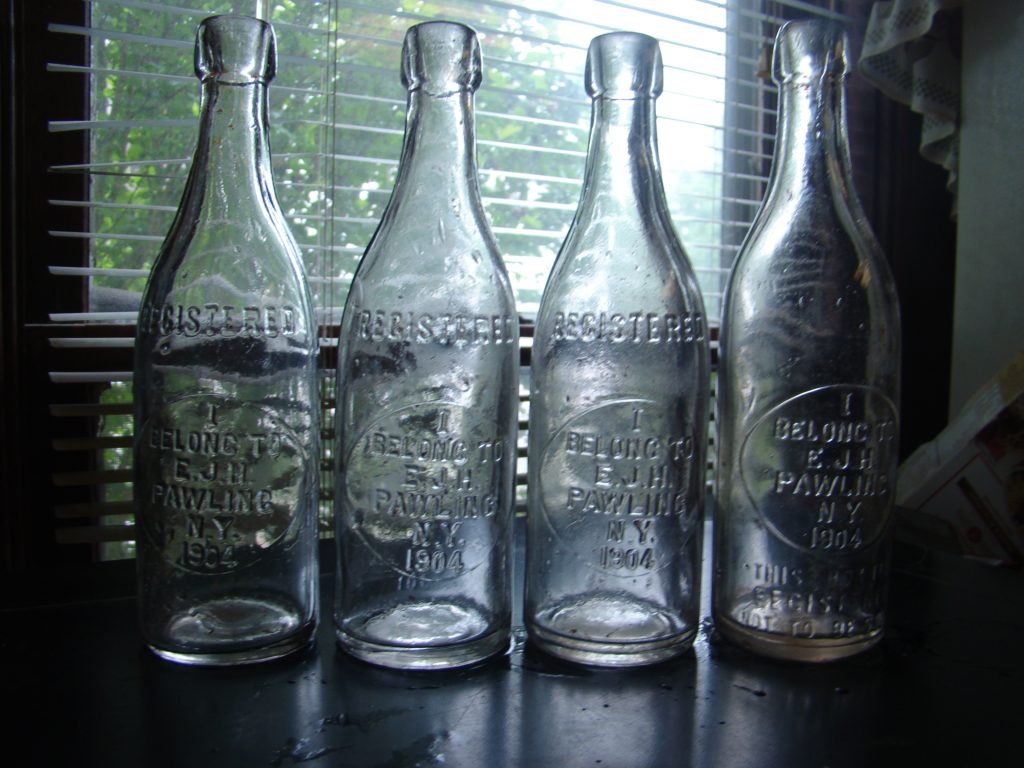
Four more “I belong to E.J.H” blob tops clearly dated 1904. A year earlier Hawkins was arrested for stealing competitors’ bottles including bottles belonging to J.P. Kiernan.
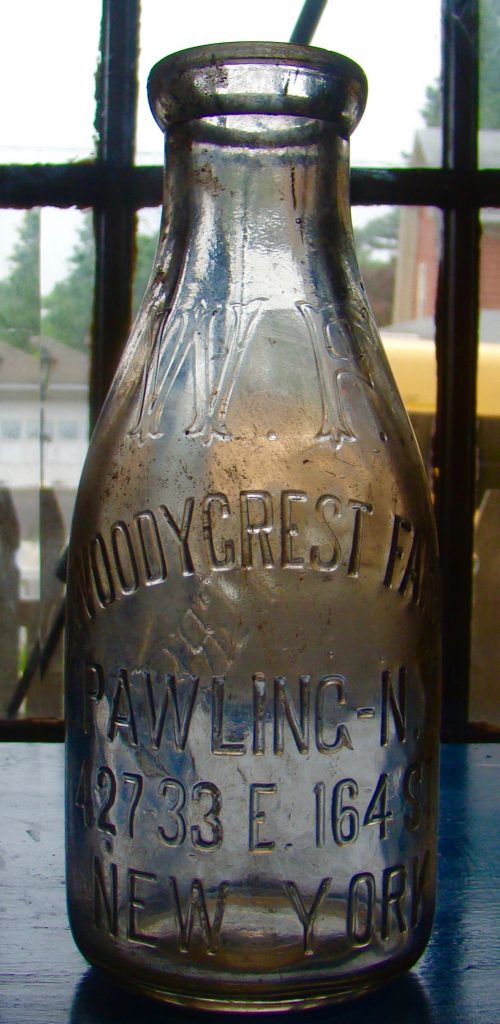
![]() WITH THE HELP OF A DIGGING COLLEAGUE, HAT CITY DIGGERS FIND A RARE NEW YORK MILK
WITH THE HELP OF A DIGGING COLLEAGUE, HAT CITY DIGGERS FIND A RARE NEW YORK MILK
Practically nothing is known about the mysterious Woodycrest Farm and the limited information we do have just adds to the confusion. But with a little reason, we can draw some plausible conclusions about this obscure dairy enterprise. According to the bottle, the firm was located at 427-33 East 164 St, however, Polk’s New York Copartnership and Corporation Directory from 1910, lists the address as 817 Union Ave. Google Earth places both addresses squarely in the Bronx. That said we can assume the firm moved at one point during its existence. This may be true but why then is the name of a village 70 miles from the Bronx, embossed on the bottle? We’ve come up with one possible explanation. We believe Woodycrest Farm was probably located in Pawling and the processing plant or milk depot was located in the Bronx at the 427-33 address. Beyond plausible conclusions we were able to determine without a doubt the firm’s corporate hierarchy: William Thompson was the company president, Herny E. Ott, secretary. At this time nothing else is known about this very obscure dairy operation and its workings. We dug the bottle above from a massive dump in Yonkers, N. Y. with the help of a digging colleague familiar with the area. The bottle dates to at least 1910.
